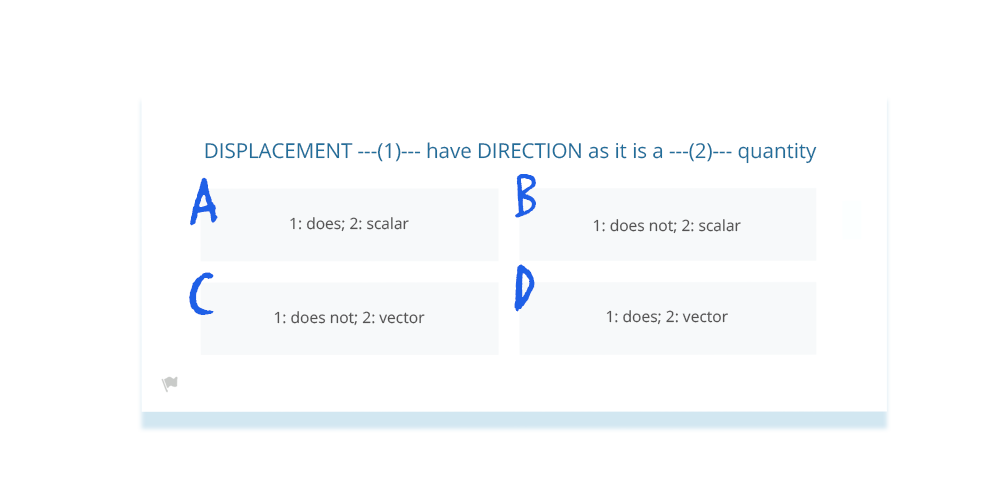Tricky Topics #1 - Scalar and vector quantities
We’ve looked through the Tassomai data, and found some of the topics that our students find the hardest! We’ll post a brief explainer on each of these topics over the next few weeks in the run up to exam season. Give this series a read if you, your child or your students are struggling with any part of Tassomai - even if these particular topics aren’t problematic, we’ll also touch on some common errors students make when answering questions on Tassomai!
Getting to grips with scalar and vector quantities
Lots of our students seem to struggle with questions on scalar and vector quantities, so we’ve gone through the key difference here.
Here’s an example Tassomai Question:
This question is checking whether you know the difference between scalar and vector, and whether you know which category displacement falls into.
The difference between scalar and vector
Scalar quantities only have magnitude (size) - the direction doesn’t matter.
Vector quantities have both magnitude (size) and direction.
This question - displacement and distance
In the question above it asks about displacement. Lots of students confuse displacement and distance. Distance is a scalar quantity, whereas displacement is a vector quantity.
When you think about distance, all that matters is how far someone has travelled - it doesn’t matter in what direction.
Displacement, on the other hand, is measuring how far in a certain direction you end up from the start point.
Therefore in the example in this image, where someone walks from their home to the shop and back, the distance is 200m, but the displacement is 0m.
This is because they have travelled 100m there and 100m back - the magnitude is 200m, making the distance travelled 200m. However the direction is 100m to the right and 100m to the left, which cancels out to leave a displacement of 0m.
An easy way to think of this in a “real world” scenario is that distance is how far your Fitbit would say you had travelled (200m), whereas your displacement is how far you are from the start (0m - you’re back home!)
Therefore the answer to this question is D - displacement does have direction as it is a vector quantity.
Speed and velocity
You might also find it helpful to think about what this person’s speed and velocity would have been during this trip. Speed is a scalar quantity - it is the rate of change of distance. Therefore, if they walk at a constant pace of 4mph, their speed will be 4mph on both the journey there and back.
However velocity is a vector quantity - it is the rate of change of displacement. Therefore, from left to right, their velocity on the way to the shop is 4mph, but on the way back it is -4mph.
Examples of vector quantities:
Displacement
Velocity
Acceleration
Force
Weight
Momentum
Examples of scalar quantities:
Distance
Speed
Time
Power
Energy
Find out more on BBC Bitesize if you’re still confused!



